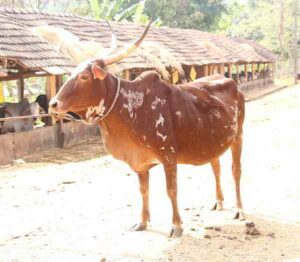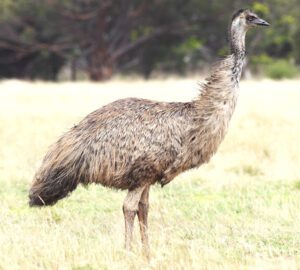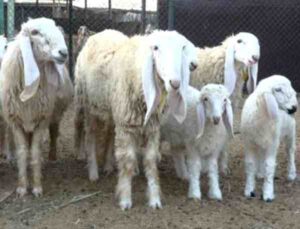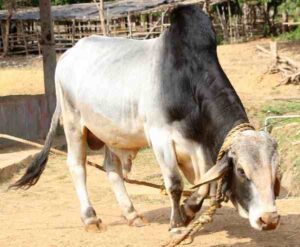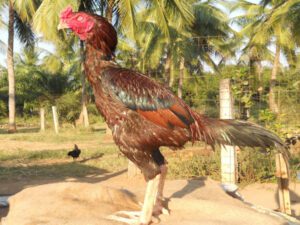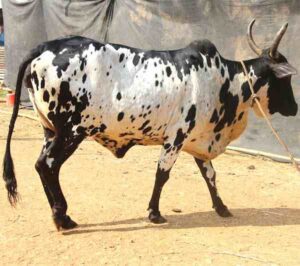The Red Sindhi cattle is the most common and popular of all Zebu dairy cattle breeds. It is also known by some other names such as Red Rarachi, Malir and simply as Sindhi.
The breed was originated in the Sindh province of Pakistan. Currently, it is widely kept for milk production across Bangladesh, India, Pakistan and Sri Lanka, and also in some other countries.
The breed was originated in Hyderabad, Pakistan and Bikaner, India. The breed has been used for crossbreeding with temperate origin dairy cattle breeds in many countries to combine their tropical adaptations (heat tolerance, tick resistance, disease resistance, fertility at higher temperatures, etc.) with the higher milk production found in temperate regions.[1]
These animals have been crossed with Jerseys in many places, including India, Australia, Sri Lanka and the United States.
They have also been crossed with Holstein Friesian, Brown Swiss and Danish Red cattle. The breed has also been used for improving beef and dual purpose cattle in many tropical countries, as it is sufficiently meaty to produce good beef calves in such crosses and the high milk production helps give a fast-growing calf which is ready for market at one year.
The Red Sindhi cattle breed is somewhat smaller than the very similar Sahiwal and it produces a little less milk per animal as a result.
Red Sindhi Cattle Characteristics
The Red Sindhi cattle are medium sized animals, and they are very beautiful in appearance. They range in color from a deep reddish brown to a yellowish red, but most commonly deep red. The bulls are generally of a darker color than the cows.
The breed is easily distinguishable from the other dairy breed of Sindh, the Tharparkar or White Sindhi, both by color. And the Red Sindhi is smaller, rounder, with a more typical dairy form, and with short, curved horns, while the Tharparker is taller with a shape more typical of Zebu draft breeds, and with longer, lyre shaped horns.
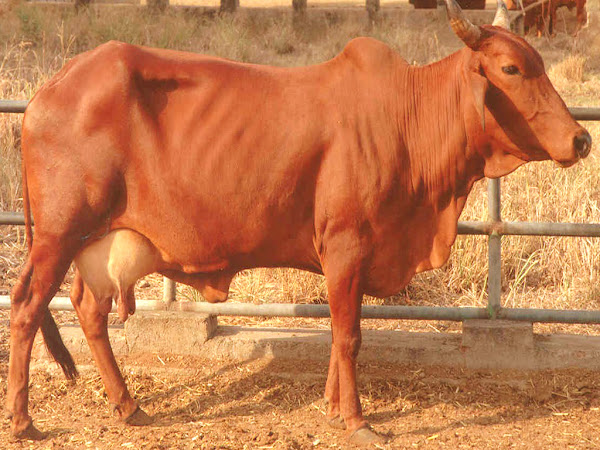
Skin color of these animals is brick red. And both bulls and cows have lyre shaped horns. As a medium sized breed, average live body weight of the mature bulls is around 530 kg. And average live body weight of the mature cows is around 325 kg.
Uses
The Red Sindhi cattle are raised mainly as a dairy cattle breed in India. But in other countries, it is also raised for meat.
Special Notes
The Red Sindhi cattle are very hardy and strong animals. They are well adapted to their local climates, and also do well in some other environment. That’s why, today they are widely available throughout the world.
The cows are pretty good milkers. But the breed is not raised commercially, because they don’t produce much milk like the commercial breeds.
Some Red Sindhi cows were imported to the Brazil in the middle of the 20th Century. And the breed is also used for milk production in Brazil, but this race of Zebu is not popular as others.
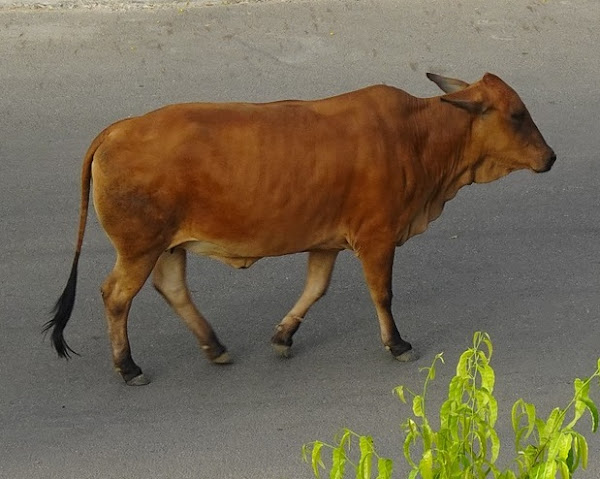
Today, the breed is available throughout the world, and raised for both meat and milk production. However, review full breed profile of Red Sindhi cattle in the table below.
| Breed Name | Red Sindhi | |
| Other Names | Also known by some other names such as Red Karachi, Sindhi, Malir | |
| Breed Purpose | Mainly milk, but also raised for meat in some countries | |
| Special Notes | Good behavior and temperament, known for their hardiness and their ability to convert grass into milk efficiently, able to adapt a wide variety of climates, very good for milk production, milk is of good quality, the breed is also good for meat, good for draft purposes, available worldwide | |
| Breed Size | Medium | |
| Bulls | Around 530 kg | |
| Cows | Around 325 kg | |
| Climate Tolerance | All climates | |
| Coat Color | Generally red-brown | |
| Horned | Yes | |
| Milk Yield | Good | |
| Rarity | Common | |
| Country/Place of Origin | India, Pakistan |

